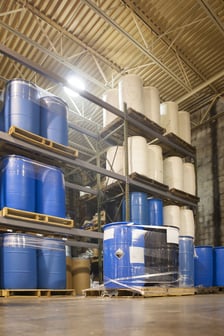Explosions are always possible in hazardous environments. Practical solutions for explosion protection are vital prerequisites for electrical instrumentation and safety measures must ensure a degree of freedom for the connections in the safe area. Ensuring that all electrical loops are initially designed to meet all safety and installation criteria is critical. The output of equipment should be installed and tested so that no additional explosion proof measurements need to be taken later. The most practical way to provide this level of both protection and freedom is by intrinsically safe equipment.

Historically, when electrical equipment was located in hazardous location it was placed in purged cabinets or in explosion proof enclosures. Intrinsically safe equipment has made these methods of protection obsolete. Intrinsic safety is a type of explosion protection which keeps the available electrical circuit—under normal or abnormal conditions—so low that ignition cannot occur. Abnormal conditions include failure to components of the equipment installed in an intrinsically safe circuit. Limiting electrical energy is the key function of the intrinsically safe system; no one component of equipment in itself is intrinsically safe.
All equipment must meet certain energy releasing characteristics. The electrical characteristics of equipment in hazardous locations determine the amount of allowable energy and depends on the classification of the flammable material. Equipment located in non-hazardous areas to provide an intrinsically safe circuit must be incapable of producing energy that exceeds the pre-evaluated critical energy limit. The critical energy limit must be under normal and abnormal conditions. The most widely accepted code of standards in the UL 913, Standard for Safety Intrinsically Safe Apparatus and Associated Apparatus, which defines the requirements for equipment used in Division 1 hazardous locations.
There are many advantages associated with Intrinsic Safety, see below for the main ones:
Advantages of Intrinsic Safety
- Explosions are prevented, not contained
- Circuits is not in explosion proof hardware and is accessible
- No safety permits required for maintenance
- Circuits low voltage
- No shock hazard
CLICK HERE to learn how to select an intrinsically safe pressure transducer.
